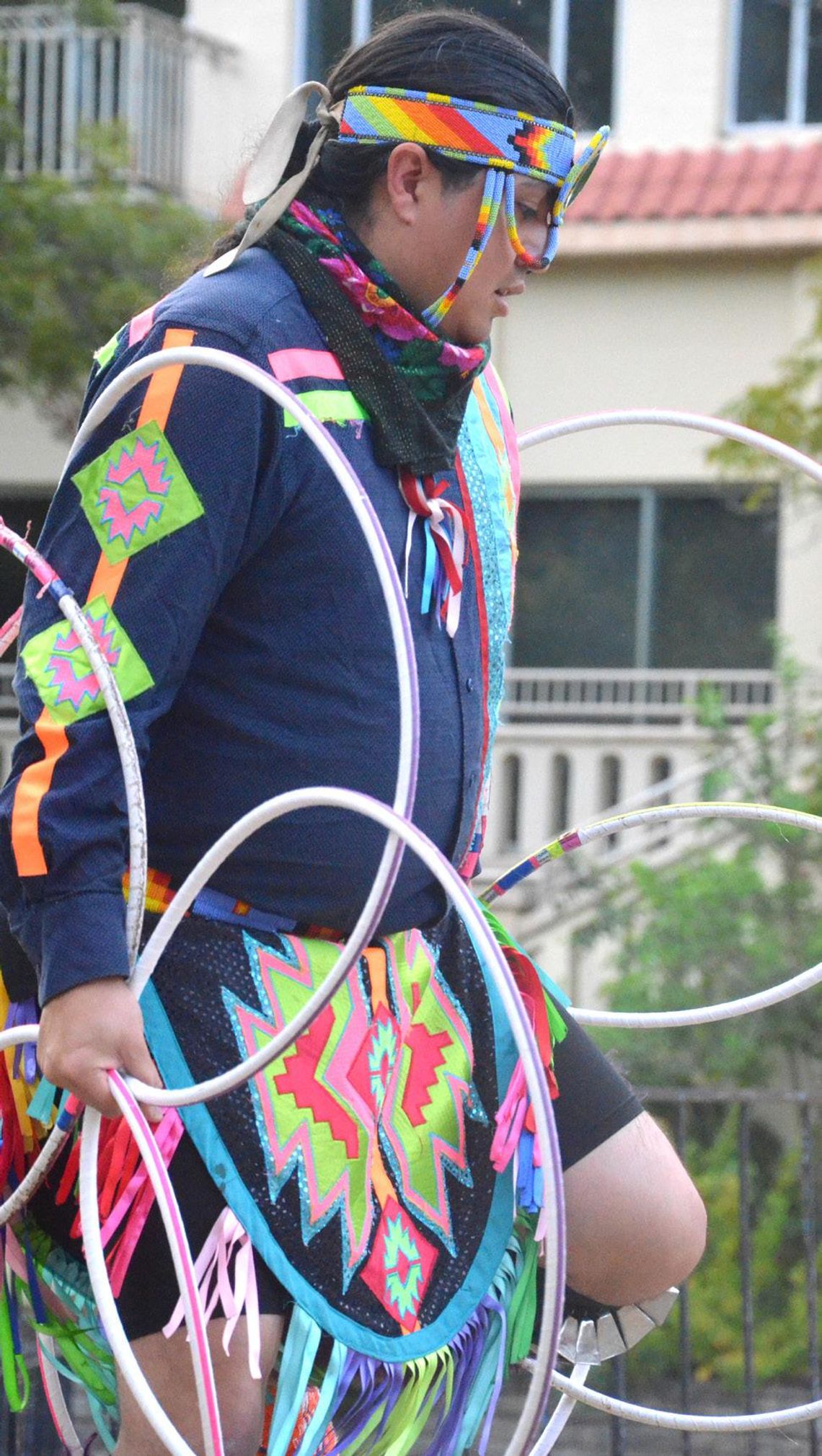Rich story tradition continues in San Marcos for native cultures
The 2023 Indigenous Peoples’ Day brought a crowd to the Sacred Springs in San Marcos to experience the culturally significant prayers, dancing, singing, teachings, wares and food that are a part of the rich Coahuiltecan creation narrative and traditions on Monday.
The Indigenous Cultures Institute in concert with the city of San Marcos hosted the event at The Meadows Center for Water and the Environment.
During the event, ICI Youth Program Director Laura Rios-Ramirez said this is going to be the future location of the institute.
Rio-Ramirez said the greater intention of this day was to teach the public about key aspects of the culture “from the mouth to the ear,” which is the way that their stories have been passed down through the generations.
The ceremony began with a prayer that was led by Rios-Ramirez–who held an amulet with burning incense–and Alvaro Ramirez–who blew into a conch shell. They instructed the crowd to face the north, south, east and west and touch the earth and reach up to the heavens during the prayer. After the prayer, Dr. Mario Garza beat a drum and sang a song for the crowd.
Catarina Suarez told the “Coahuiltecan Creation Story,” which started with an upper world and a lower world long, long ago. Suarez said the “Pilam”–Coauiltecan people– were trapped in the underworld. A “Panama” appeared–a sacred deer– and grabbed the Pilam and they began swimming toward the portal to the “Tap Tai”–Mother Earth, and a “Miakan”–a water bird grabbed them and pulled them to “Tap Tai.”
“That is how the Pilam came to be on Tap Tai,” Suarez said. “And that is Napako, the Coahuiltecan Creation Story.”
Suarez, Jose Dominguez, Diana Guizado and Sami Gregory participated in the ICI Indigenous Arts Summer Encounter and sang a song in three different languages–Coahuiltecan, Spanish and English– that they learned during their time in the program.
“I’ve heard the song in Spanish–that’s how we first heard it,” Dominguez said. “As we were learning the language and reviewing the documentation that we do have … we tried to create and translate this song into Coahuiltecan using the tools that we have.”
Then there were dances by the Tsosie family.
“We have been dancing since we were little,” Naakaii Tsosie said. “Dancing is a huge part of who we are, and how we share who we are.”
First, Tyra Tsosie did a healing dance called the “jingle-dress dance” with a feathered fan and a dress covered in tobacco can lids, which created sounds as she danced.
Then Naakaii did a hoop dance. He danced with approximately eight small hoops that he twisted and moved around to create different shapes and even creatures like a butterfly, bird and an alligator. And in the most heart-warming and wholesome moment of the evening, Naya Tsosie, their toddler daughter, ran to her father to give him a hug after his performance.
Then it was time to feast with the Elders served first, as is tradition. They served Jamaica juice, Rosemary water, Mesquite cookies, Pecan polvorones, blue and yellow corn polvorones and tamales, which are also made using corn.
“Our ancestors have always had a really good relationship with observing and working with the land,” Rios-Ramirez said. “This sacred seed was able to build communities and build sustenance for communities … and it was exchanged all throughout what we now know as the Americas.” She added that if you like corn, you can thank a Mexican Indigenous person for that.
There was also a husband- wife duo vending handmade sterling silver on site. Edgewater Jewelry Co is run by Orrin and Deborah McCray, and they use traditional Navajo silversmithing techniques, which were passed down in the McCray family. You can shop their wares here edgewaterjewelryco.com.








